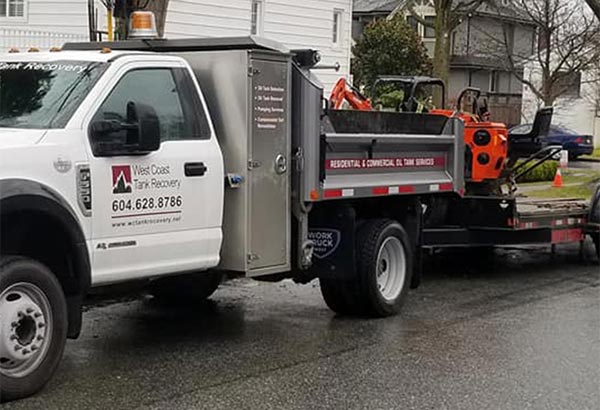 Fully Licensed and Insured
Fully Licensed and Insured Request an Oil Tank Scan
Request an Oil Tank Scan Request a Free Estimate
Request a Free Estimate

Finding and removing an underground oil tank from your commercial or residential property is no easy task. It is, however, a necessary part of any building or landscaping project that involves digging below ground level. Property owners are responsible for removing or dealing with underground oil tanks. With the help of an expert in oil tank removal and the right equipment, it doesn’t have to be as challenging as it sounds.
But why do you have go through the process of oil tank removal? Many properties have new technologies and systems to heat their property, making an underground oil tank useless. If there is still oil in the tank, it is at risk of leaking into the property. This is a major health concern for the people, animals, nearby waterways or groundwater resources, and the surrounding environment.
Before you start work on your property, check whether there is an underground oil tank. Property blueprints often show if there is an tank under the property, but not always. For example, some records might not be easily accessed or accurately documented, if there are only paper archives available. If you can’t find any documents, hire a technician who can use a scanner to detect underground oil tanks. Don’t risk finding a tank by surprise, midway through your renovation.
Once the tank is located, look up what permits are required for your property. It’s important to know that bylaw requirements about oil tank removal in Vancouver can be very different from those in another region. For example, the property owner will often need a permit to remove an underground tank, another to excavate the land, and further help from officials to mark underground utility lines for power, natural gas, and sewage. As well, while some communities and specific circumstances will allow an oil tank to be filled, most bylaws require that the tank is pumped dry, removed, and disposed of safely.
An expert of oil tank removal in Vancouver will be able to handle these steps on behalf of a property owner. However, this is rarely the last step. After the tank is removed and before the empty hole is filled, a thorough environmental assessment and soil testing must be made to identify and remove any contaminated sand or soil without contaminating further areas. Make sure to hire a contractor who can also provide site restoration and back fill services so that your renovation project can get started as soon as possible.
Even the most qualified household handyman will need to contract this part of the project out, so read up and make sure your contractor is qualified to take on your oil tank removal.